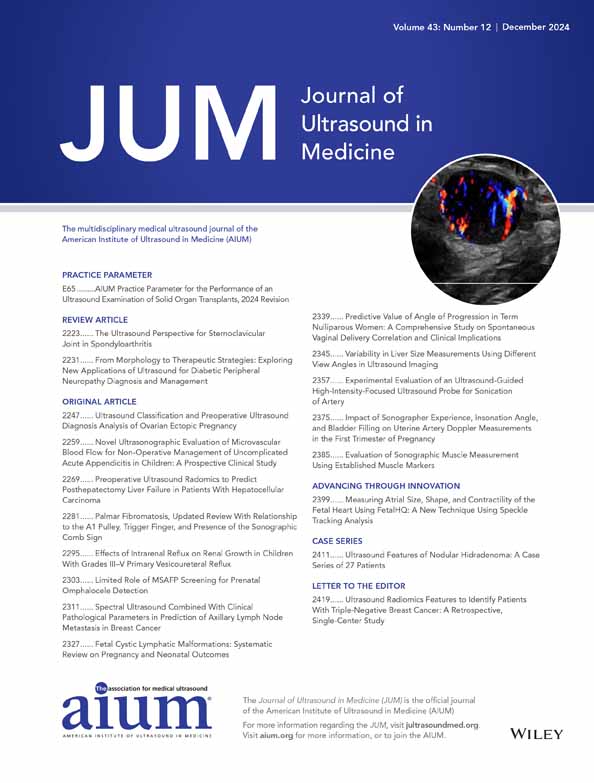Variability in Liver Size Measurements Using Different View Angles in Ultrasound Imaging
The authors thank Canon Medical Systems USA for providing research funding and equipment to support the study.
Abstract
Purpose
The aim of this study was to compare liver size measurements in different conventional B-mode ultrasound image (US) field views using magnetic resonance imaging (MRI) measurement as a reference.
Methods
After receiving Institutional Review Board approval and informed consent, three operators measured the largest sagittal and transverse dimensions of adult livers on three US image field views (90°, 120°, and 140°) with a single curvilinear transducer. We analyzed the differences in liver size across three image field views using one-way analysis of variance (ANOVA) and examined the correlations between MRI and ultrasound measurements using Spearman regression. We used 95% Bland–Altman limits of agreement (95% LOA) to analyze the confidence interval for liver size measurements between MRI and US. Intra-observer and inter-observer reliability in measuring liver size were assessed using intraclass correlation coefficient (ICC).
Results
Based on sagittal liver length, 28 adult participants (7 men and 21 women, mean age 43 years) were divided into Group 1 (<17 cm, n = 10) or Group 2 (≥17 cm, n = 18). There was a significant difference in the liver size measurements across the three image field views (P < .001) in both groups. The highest correlation in liver size measurements between MRI and US was with ultra-wide-view (R2 = .87 in sagittal; R2 = .79 in transverse). Bland–Altman LOA also indicated good agreement between MRI and ultra-wide-view measurements. Intra-observer and inter-observer reliability in measuring liver size were good (ICC = 0.82–0.98).
Conclusion
The study suggests that ultrasound ultra-wide-view provides the most accurate liver size measurement and good intra- and inter-operator reliability.
Open Research
Data Availability Statement
The data that support the findings of this study are available from the corresponding author upon reasonable request.




